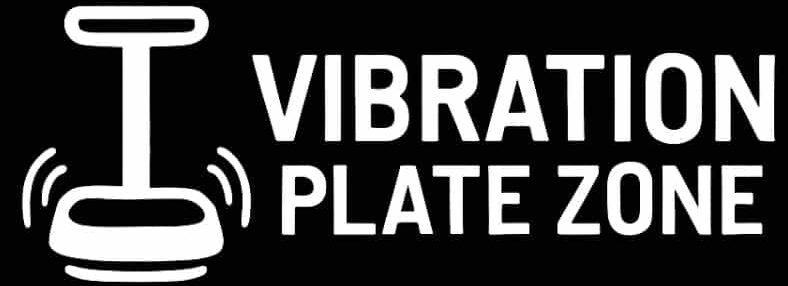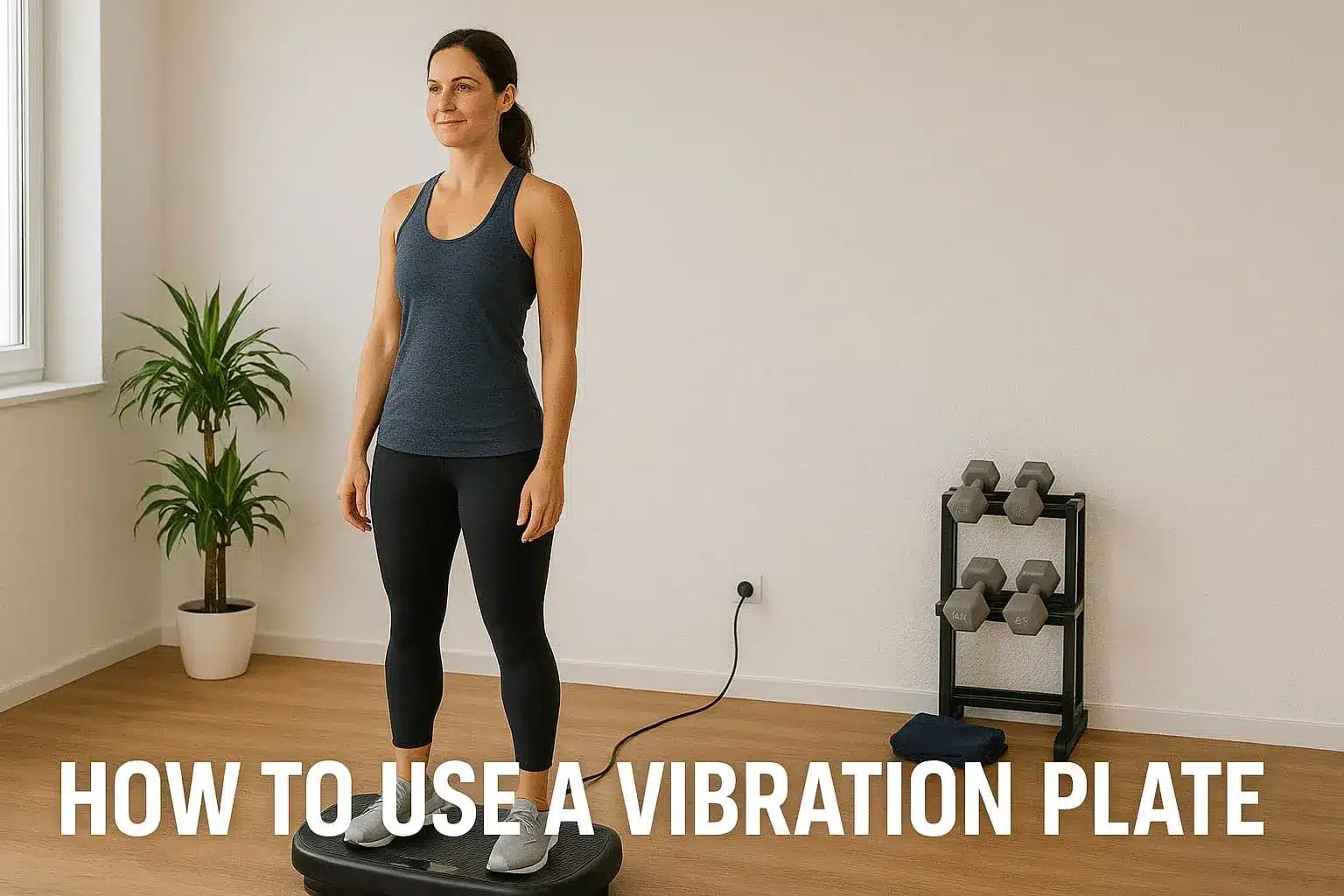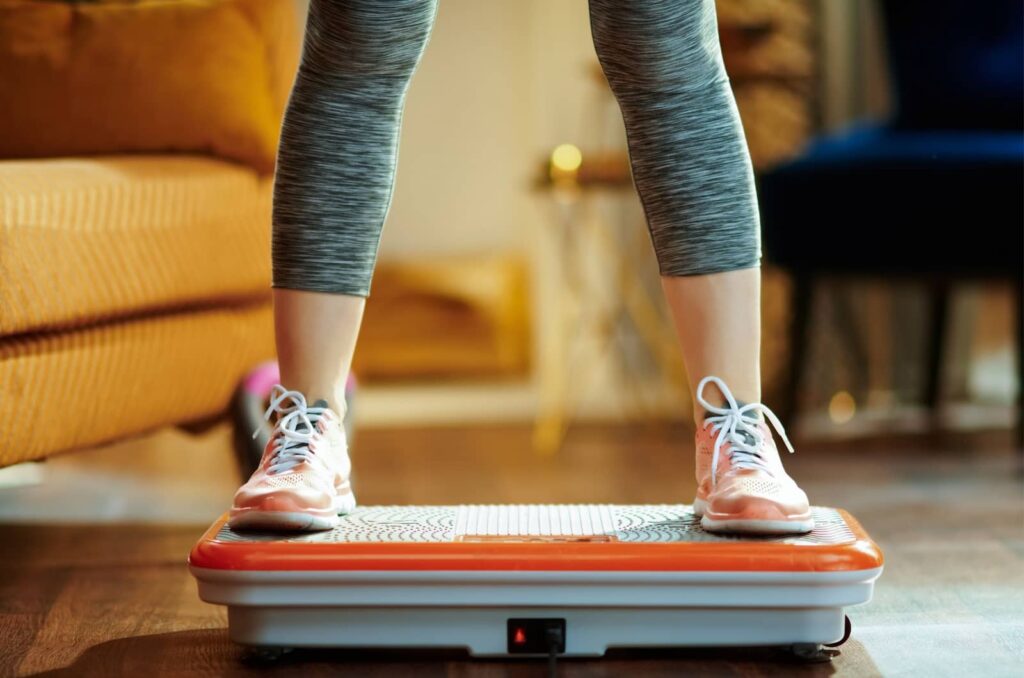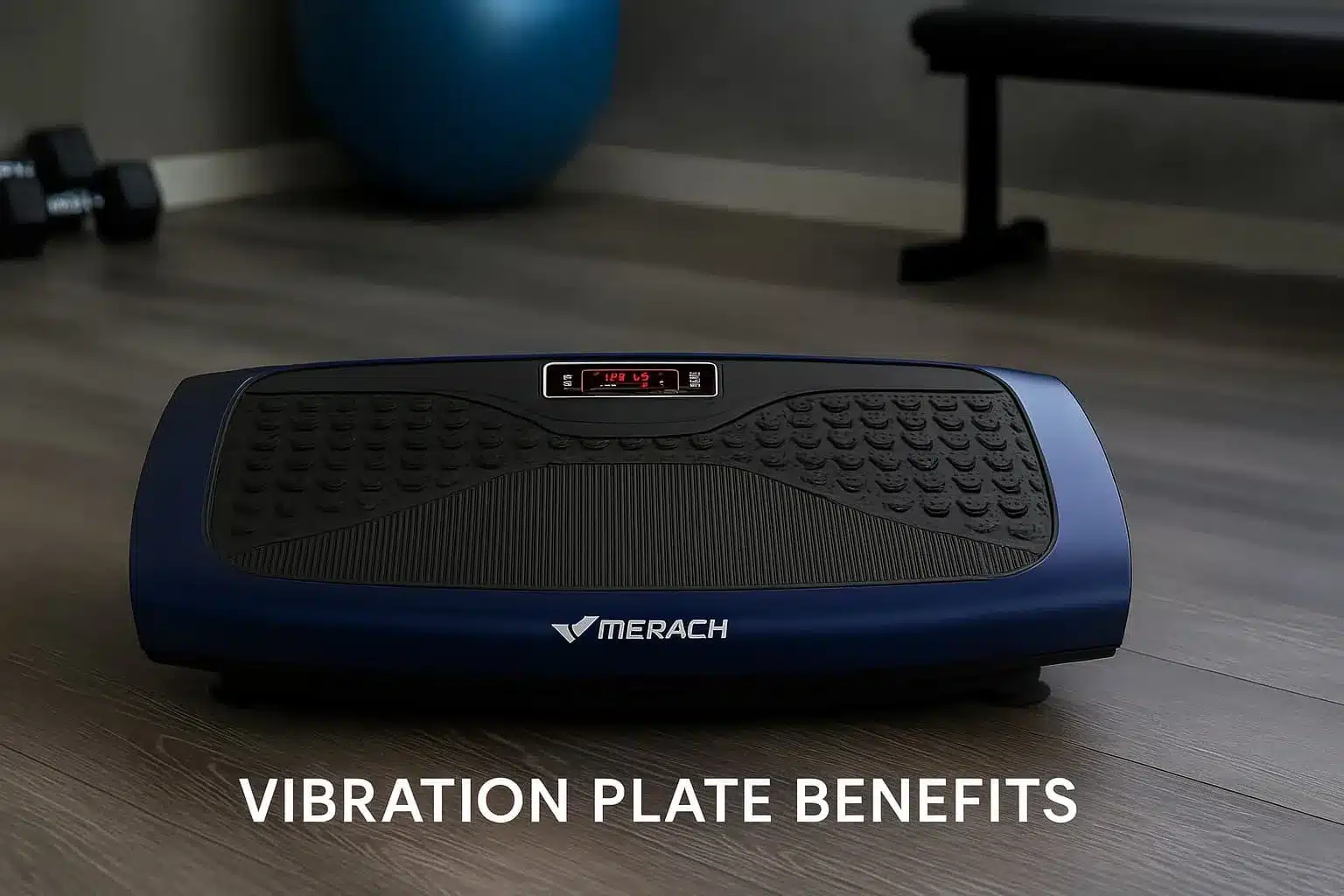Whole body vibration has become a popular addition to home fitness, but many people still wonder how to use a vibration plate correctly. I have spent years coaching clients through this process and using one myself. While the concept is simple, you stand or perform exercises on a platform that vibrates, there are nuances that make a big difference in comfort and results.
This guide explains how to set up, stand, and move on a vibration plate, with variations for beginners, weight loss, lymphatic drainage, and back pain relief. By following these steps, you will gain confidence and unlock the benefits of vibration training.
How to Use a Vibration Plate: Understanding the Basics
Before stepping on the machine, it helps to know what a vibration plate does and how it affects your body. A vibrating platform sends mechanical waves through your feet or hands, causing your muscles to contract and relax very quickly. This reflexive action can improve strength, balance, circulation, and even bone health.
The key controls are frequency (measured in hertz), amplitude (how far the plate moves up and down or side to side), and time. For most home machines, you can adjust these settings to match your goals.
I always start by reading the manual and familiarising myself with the controls. Begin at a low frequency and amplitude, usually around 10–15 hertz, and stand on the platform with knees slightly bent. Keep your core engaged, shoulders back, and head aligned with your spine. Never lock your knees or lean your weight backward. The gentle vibrations should travel through your legs and torso; if you feel them in your head or teeth, reduce the intensity or adjust your stance.
Understanding how vibration works helps you make the most of the machine. For a deeper dive into the science and history of these devices, check our comprehensive article on what a vibration plate is. That page explains how different types of vibration plates operate and which settings are best for various outcomes.
Setting Up Your Vibration Plate Safely

Proper setup ensures that each session is comfortable and effective. Place your vibration plate on a flat, non-slip surface. If your floor is hardwood or tile, use a rubber mat to dampen noise and protect your flooring.
Make sure there is enough space around the unit to step on and off safely.
Before turning it on, inspect the power cord for damage and ensure the remote control (if included) has fresh batteries.
For stability, start with both feet on the center of the plate. I recommend wearing athletic shoes until you are used to the sensation. Shoes help dampen vibration and reduce stress on your joints.
As you gain experience, you can experiment with barefoot sessions to strengthen your feet and improve balance. However, always listen to your body and avoid any positions that cause discomfort.
Simple Moves and Posture for Beginners

If you are new to vibration training, focus on basic positions that allow you to get used to the feeling. Begin with a five‑minute session at low intensity.
Stand with your feet shoulder‑width apart, knees bent, and hands resting lightly on your hips or clasped in front of you. Keep your weight centered and breathe normally. This position works your legs and core while helping you adjust to the vibrations.
After a minute or two, try shifting your weight gently from side to side or forward and back. These small movements engage stabilising muscles and improve coordination. You can then incorporate slight knee bends or hold a half squat for 20–30 seconds. Keep sessions short, especially during the first week. You should feel a pleasant challenge but not excessive fatigue.
Some people like to combine vibration training with simple bodyweight exercises. I often add calf raises by lifting my heels and lowering them slowly. This helps build calf strength and improves balance. If you want to include upper body work, you can perform wall pushes or place your hands on the plate in an elevated plank position. Always maintain a soft bend in your elbows and keep your head in line with your spine.
Beginners may find it helpful to read a detailed breakdown of vibration plate fundamentals. Our knowledge hub article vibration plate benefits covers advantages such as increased muscle activation and improved circulation, which can motivate you to stick with the practice.
How to Use a Vibration Plate for Lymphatic Drainage

The lymphatic system relies on movement to transport fluid and remove waste from the body. A vibration plate for lymphatic drainage workout stimulates this flow through gentle oscillations.
To encourage lymphatic drainage, use low frequency settings (around 10–20 hertz) and stand in a relaxed, stable position. Keep your knees soft and shift your weight gradually from one foot to the other. Deep, steady breathing enhances the pumping effect.
During these sessions, I avoid any high‑impact moves or heavy weights. Instead, I focus on dynamic stretches: lifting one heel while pressing the opposite toes into the plate, or raising my arms overhead as I inhale and lowering them as I exhale.
Sessions for lymphatic drainage typically last 5–10 minutes. For more inspiration, our list of the best vibration plates for lymphatic drainage features models that excel at gentle oscillation and smooth speed transitions.
How to Use a Vibration Plate for Weight Loss

Vibration training can support weight management by increasing muscle activation and calorie expenditure. However, it should complement a balanced diet and other forms of exercise.
When I use a vibration plate for fat loss, I combine it with dynamic bodyweight movements and higher frequencies. For example, I set the plate to a medium or high speed (around 25–35 hertz) and perform squats, lunges, push‑ups, and planks on the platform. These vibration plate exercises engage large muscle groups, boosting heart rate and energy use.
I typically structure a weight loss session as follows: a two‑minute warm‑up at low intensity, followed by three rounds of compound movements lasting about one minute each with 30 seconds of rest in between. After the workout, I cool down with gentle stretching and lower‑frequency vibration to support circulation and recovery.
Remember that vibration alone will not burn significant fat; it works best when paired with walking, jogging, or strength training off the platform. You can explore our guide to the best vibration plates for weight loss to choose a machine with features that suit more intense workouts.
How to Use a Vibration Plate for Beginners
Starting any new form of exercise can feel intimidating, and vibration plates are no exception. Beginners should focus on learning proper form and building confidence before progressing to advanced settings.
I recommend keeping the first few sessions short, five to ten minutes, at a low frequency (15–20 hertz). Your stance should remain stable, with feet parallel and knees slightly bent.
After you feel comfortable standing still, incorporate gentle movements. Try alternating between a half squat and standing upright, or lift one foot slightly off the platform while maintaining balance. Avoid complex exercises or high frequencies until you have practiced the basics.
As you gain familiarity, you can extend your sessions to 15 minutes and add simple bodyweight exercises like bridges or side leg raises. If you need a machine specifically suited for small spaces and quiet operation, consider the models highlighted in our list of the best vibration plates for home use.
How to Use a Vibration Plate for Back Pain Relief

Vibration training can help relieve back discomfort by promoting blood flow, relaxing tight muscles, and encouraging gentle movements. When using a vibration plate for back pain, always consult your healthcare provider first to ensure it is safe for your condition. If you get the green light, keep sessions gentle and focus on posture. Set the frequency to a low range (around 15–20 hertz) and stand with your feet shoulder‑width apart.
A favorite technique of mine is to perform pelvic tilts while on the plate. Stand with knees bent, place your hands on your hips, and gently tilt your pelvis forward and backward, engaging your lower abdominal muscles. This helps mobilise the lumbar region without heavy strain.
You can also try mini knee bends, shifting your weight from one foot to the other, or holding a gentle cat‑cow stretch by placing your hands on your thighs and arching and rounding your back slowly.
Keep sessions short and stop immediately if you feel pain. For individuals needing more structured guidance, the best vibration plates for neuropathy article provides recommendations for plates with gentle, adjustable settings ideal for sensitive conditions.
Building a Routine and Progressing Safely
Consistency is key to seeing results with vibration plates. Start by scheduling two or three sessions per week and gradually increase the frequency as your body adapts. Each session should include a warm‑up, the main exercises, and a cool‑down. Keep track of the settings you use and how you feel afterward. This self‑monitoring helps you adjust intensity safely.
To progress, increase only one variable at a time, frequency, amplitude, exercise complexity, or session length rather than boosting everything at once. For example, after two weeks of using 15 hertz for ten minutes, you might add two minutes to each session or raise the frequency to 20 hertz.
Pay attention to signs of overtraining, such as excessive soreness or fatigue, and scale back if necessary. Quality of movement matters more than quantity; sloppy form reduces benefits and increases injury risk.
If your goal is to improve bone density or support conditions like osteoporosis, choose machines with consistent vibration patterns and moderate frequencies. Our review of the best vibration plates for osteoporosis outlines models designed to provide safe, controlled stress for bones without jarring impacts.
Personal Experience and Practical Tips

When I first stepped on a vibration plate, I was curious yet skeptical. The platform hummed beneath me, and I felt my leg muscles activate more quickly than during a regular warm‑up. After a few sessions, I noticed subtle improvements in my balance and lower leg strength. Over months, I started using the plate as part of my morning routine, standing on it while drinking water and planning my day.
One thing I learned is the importance of posture and breathing. If I let my knees lock or my shoulders hunch, the vibration felt jarring rather than refreshing. By keeping my core engaged and shoulders relaxed, I could stand on the plate longer without discomfort.
I also found that shorter, more frequent sessions were more effective than occasional long workouts. For example, three ten‑minute sessions per week yielded better results than a single thirty‑minute session. These insights align with the experiences shared in our LifePro Rumblex review, where I describe how varied vibration patterns kept sessions engaging and beneficial using thi plate.
Another tip is to combine vibration training with other forms of exercise. I often use the plate as a warm‑up before resistance training, which primes my muscles and joints for heavier lifts. On recovery days, I stand or sit on the platform at a low frequency to stimulate circulation and reduce soreness. A balanced approach keeps my workouts interesting and prevents me from overusing any single modality.
Choosing the Right Vibration Plate for Your Needs
Selecting the best vibration plate depends on your goals, budget, and home space. Compact models are ideal for small apartments, while larger platforms provide more room for dynamic exercises. Consider the frequency range, number of speed settings, and vibration type (oscillating, linear, or multi‑directional). Some machines come with handles, resistance bands, and remote controls, which can add convenience and safety.
If you want a premium experience with smooth performance and advanced features, check out our Power Plate MOVE review. It describes a high‑end model with multiple frequency settings and a solid platform designed for reliability.
For those seeking a budget‑friendly option with versatile motion, our Merach Vibration Plate review offers insights into a compact machine that suits beginners and travellers.
On the other hand, the LifePro Rhythm review highlights a model built for gentle movement and rehabilitative use.
Bringing It All Together

Learning how to use a vibration plate is a rewarding process that combines mindful posture, gradual progression, and consistent practice.
Start with basic stances and low settings, then incorporate simple exercises once you feel stable. Use low frequencies for lymphatic drainage and recovery, and medium to high frequencies for weight loss and muscle activation. Always listen to your body and consult a professional if you have medical concerns.
So, are vibration plates good for you? Yes, if you follow my guidelines, you can make vibration training a valuable part of your wellness routine or a recovery process. The right vibration machine, proper technique, and patient progression will help you reap benefits like better circulation, improved strength, and enhanced recovery.
FAQs
How to use a vibration plate for weight loss?
To use a vibration plate for weight loss, combine dynamic exercises with medium to high frequencies. Performing squats, lunges, planks, and push‑ups on the platform elevates your heart rate and engages large muscle groups. Sessions should last 10–15 minutes, and you should pair vibration workouts with regular cardio and a balanced diet for the best results.
How to use a vibration plate for lymphatic drainage?
To use a vibration plate for lymphatic drainage, set the machine to a low frequency and stand with soft knees. Gently shift your weight and breathe deeply to encourage fluid movement. Sessions of 5–10 minutes are usually sufficient, and you should avoid high-intensity moves during lymphatic sessions.
How to use a vibration plate for beginners?
To use a vibration plate for beginners, start with short sessions at low frequencies and focus on basic stances. Stand with your feet shoulder‑width apart, knees bent, and core engaged. Gradually add gentle movements like knee bends and weight shifts, and only progress to more complex exercises once you feel stable.
How to use a vibration plate for back pain?
To use a vibration plate for back pain, choose low frequencies and simple movements that promote blood flow without strain. Stand with a neutral spine and soft knees, then try gentle pelvic tilts or knee bends. Always consult a healthcare provider before starting if you have any spinal conditions.
How often should I use a vibration plate?
You should use a vibration plate two to three times per week when starting out. Sessions can last 5–15 minutes, depending on your goal and experience level. After a few weeks, you may increase frequency or session length, but always allow time for recovery and listen to how your body responds.

About the author: Hello! I’m Vladimir Stanar, professor of physical education, kinesiotherapist, marathon runner, cyclist, and cycling coach, and long-time advocate of health, fitness, and active living.
My journey with vibration plates runs parallel to my professional career in education, sports medicine, and athletic development. Over time, I’ve come to see vibration plates as one of the most versatile tools for enhancing health, recovery, and performance.



